We all know Hollywood’s obsession with prequels, remakes, re-imaginings and origin stories. Often we hear the phrase, “The origin story that no one asked for,” and in the case of Ratched, that seems especially true. The new Netflix drama delves into the origins of Nurse Mildred Ratched, the icy antagonist of Ken Kesey’s 1962 novel One Flew Over the Cuckoo’s Nest, as well as the massively acclaimed 1975 film adaptation starring Jack Nicholson.

To be fair, Nurse Ratched, a psychiatric facility overseer, has been named the second greatest movie villainess of all time, behind the Wicked Witch of the West. Still, here we are revisiting a character from a book that is almost 60 years old, and a film that is 45 years old. In public memory, that’s equivalent to a Roman tablet.
Ratched has an odd choice of subject matter and is an odd series. in a good, if acquired taste, way. Created by newcomer Evan Romansky, the series has been developed by Ryan Murphy, the man behind American Horror Story, Nip/Tuck, Glee, Scream Queens, and another recent Netflix show, Hollywood. Many of Murphy’s creative hallmarks are present in Ratched, for better or worse, but more about that in a minute.
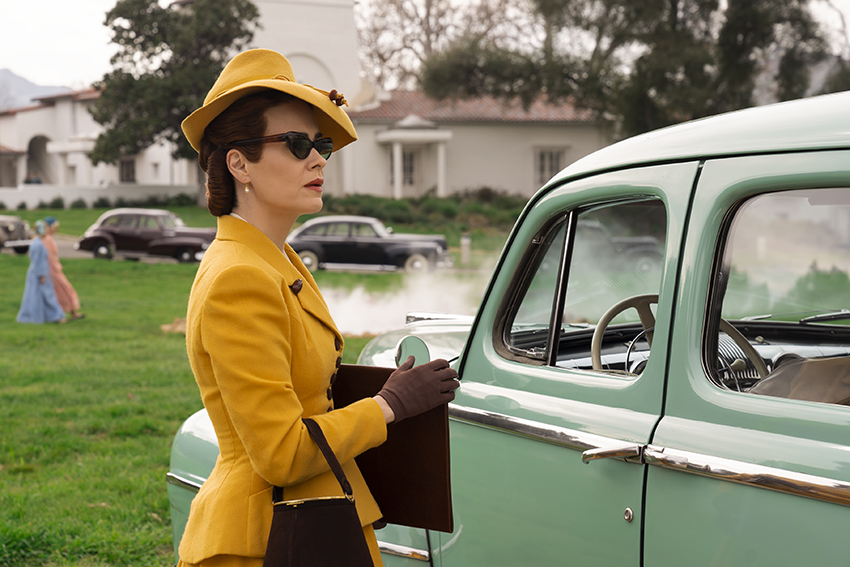
Given its source material, Ratched is not what you expect. One Flew Over the Cuckoo’s Nest took place in one of those horribly cold and clinical state facilities for the mentally ill. It presented a grim, utilitarian world of stark whites, barred windows and depersonalisation. Ratched also takes place in a state psychiatric hospital, but it couldn’t be more different.
Set predominantly in post-war 1947, Ratched Season 1 sees the title character (Sarah Paulson, a regular Ryan Murphy collaborator) arrive at a remote facility on the Northern California coast. More a spa than a mental hospital, at least in appearance, Lucia State Hospital is a world of candy-stripers, plush carpets, chandeliers and gleaming surfaces (usually with an expansive booze selection within reach). Mildred’s first step, on arrival, is to use her forceful personality to secure a position on the staff. This means out-arguing twitchy, weak-willed administrator Doctor Hanover (Jon Jon Briones), and it’s a move that sets Mildred up against spiteful head nurse Betsy Bucket (Judy Davis).
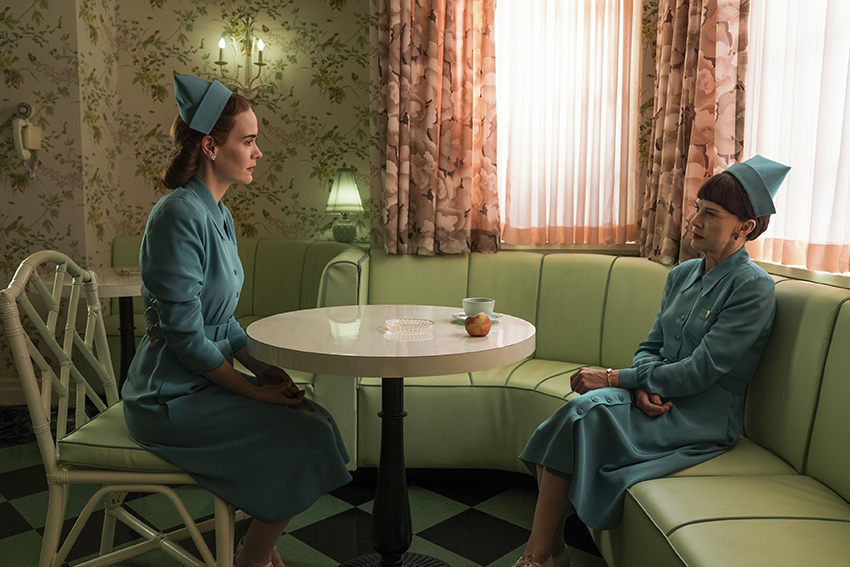
Manipulative, calculating, and deceitful, with obvious sexual hang-ups and a helluva lot of secrets, Mildred clearly has an agenda. Over the course of eight episodes, we learn what she’s up to. And why. Rather unsurprisingly, everyone in Ratched comes with a dark past, neuroses and personal failings, while considering themselves the good guy. For the record, that everyone includes the all-star likes of Cynthia Nixon, Amanda Plummer, Vincent D’Onofrio, Sharon Stone and Rosanna Arquette.
Possibly the best word to describe Ratched is “unsettling.” The viewer always feels on uneven footing with the characters, who come across as unreliable narrators even as they tell the truth. Layered on top of this quicksand foundation is graphic violence, body horror, a rotating roster of weirdos and the ultra-stylisation that Murphy has built a career on. Remember the barbaric patient treatments in American Horror Story: Asylum? Well, they’re here too – inflicted on daydreamers, homosexuals and the depressed – providing another dose of shock value that’s delivered with a brutal hypodermic jab.

Again, don’t expect anything understated or plausible with Ratched. It combines the exaggeration of a Golden Age Hollywood thriller or melodrama (you’ll spot influences like Psycho and Sunset Boulevard), with contemporary equivalent practices.
Season one’s narrative and emotional stiltedness is enhanced by its sumptuous production design. Ratched is one of the most visually striking shows of the past few years, and leans into its aesthetic hard. It’s practically technicolour at times, on occasion applying the vivid colours of its character styling to scene lighting. If someone is angry, the world turns bright red; deeply unsettled, they find themselves swathed in emerald green. Meanwhile, make-up artists and hairstylists, or anyone interested in those subjects, will be drooling over the immaculate, period-inspired hair and makeup shown in the series.
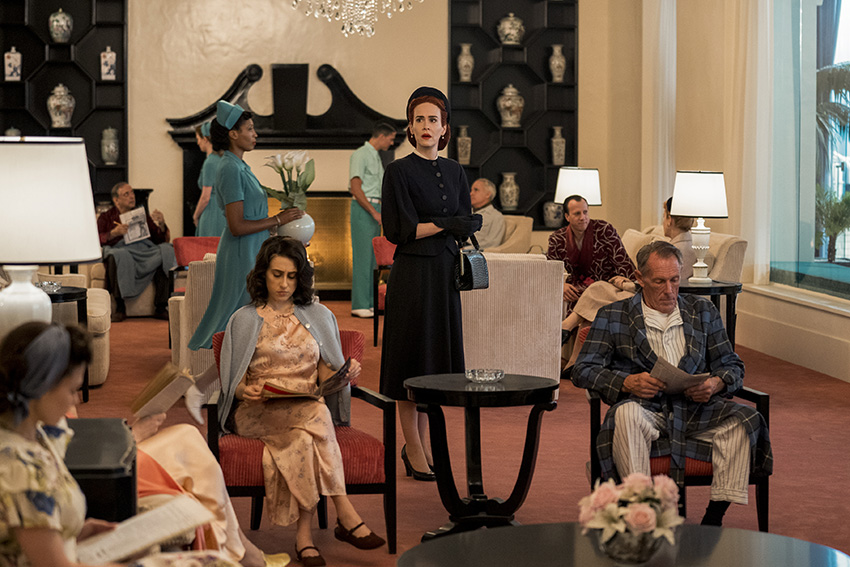
If Ratched came out in the days before streaming TV, screening weekly in a set timeslot, it’s easy to imagine it becoming a cult experience; one of those shows where flamboyant friends would gather together for drunken dress-up viewing parties. As it stands, with its all-round over-the top nature and bitchy female rivalries, Ratched could easily develop a gay following.
Ratched is far from perfect escapism, however. Its stylised, yet graphic nature will probably alienate a number of viewers. Even those who find Ratched to their entertainment tastes, however, will likely struggle with the season’s pacing issues. Ratched is extremely ponderous to begin with, to the point that you may be tempted to quit. From the third episode or so, though, things click into place, and Ratched races along, as energised and unpredictable as Dr Hanover on amphetamines.
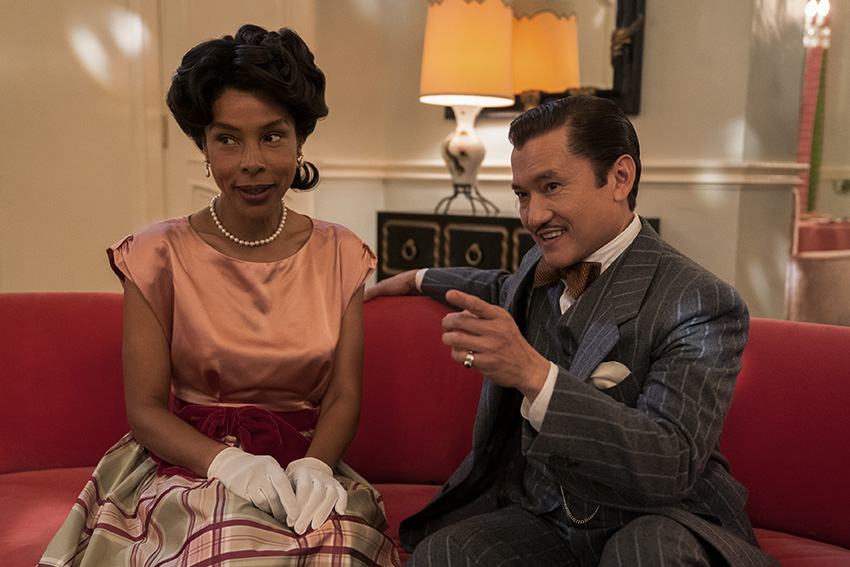
Unfortunately, though, while Ratched Season 1 is only eight episodes, it still feels too long. In a common failing with Ryan Murphy shows, almost everything is tied up neatly in the penultimate episode, turning the finale into languid epilogue that would possibly have worked better as the first episode of Season 2. As it stands, Season 1 loses all momentum at the end and just peters out.
The show also suffers from some narrative missteps. There’s a LGBT love story that features heavily, yet hardly ever rings true. Character choices are so unconvincing that it’s distracting even in a series that is so sensationalist. Then there’s the underutilised Sharon Stone, whose eccentric and electric, Asian culture-obsessed heiress arrives late in the season and leaves too early.
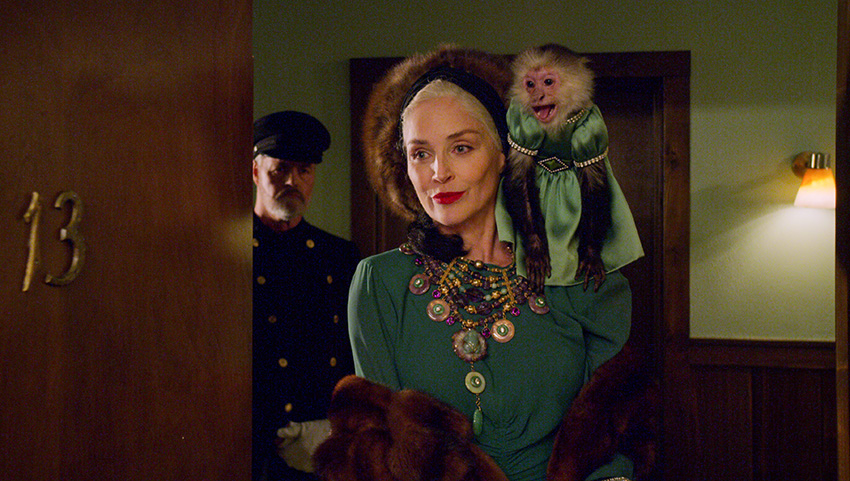
To be fair, you can’t fault the performances in Ratched. Over the course of the season, characters’ exteriors are peeled away, revealing caricatures to be flawed human beings beneath. This is especially true for Mildred, whose mission sees her cause all sorts of collateral damage, while still being shown as a deeply scarred woman who clings to the notion of being an “angel of mercy.” Paulson is that rare actress who can hold all the different, sometimes polar opposite aspects of Mildred together, and present her as an understandable figure.
A special mention must also go to Judy Davis, a scene stealer as the pompous Betsy Bucket, who matches Mildred with her complexity: buffoonish, brittle and sympathetic in equal measure.
Ratched has so much going for it, yet by the time the credits roll on the final episode of Season 1, it’s impossible to argue away its flaws. Just like viewers come to see the darkness behind all the immaculately presented characters, Ratched’s visual gloss and exceptional performances can’t camouflage the rickety frame they’re built on.
Just as worrisome, by the end of the series, the title character is still far away from the version of Nurse Ratched entrenched in popular culture. Whether the prospect of character development will entice you back for a potential Season 2 is really dependent on how fully you fall under the spell of Season 1.
Last Updated: September 14, 2020
|
It won’t be for everyone, and it’s certainly not without its flaws, but Ratched is too visually stylish, well-acted and deliberately overblown not to find an appreciative audience. Expect this Netflix series to develop a cult following in certain camp-loving quarters.
|
/10
|
|---|---|
|
| |




















GazzaD
September 18, 2020 at 13:19
This review gets me wanting to get into the horror genre. I’ve never been a fan but keep wanting to try it again. Body horror much less but especially when eye torture is involved. Would this still be a place to start off?